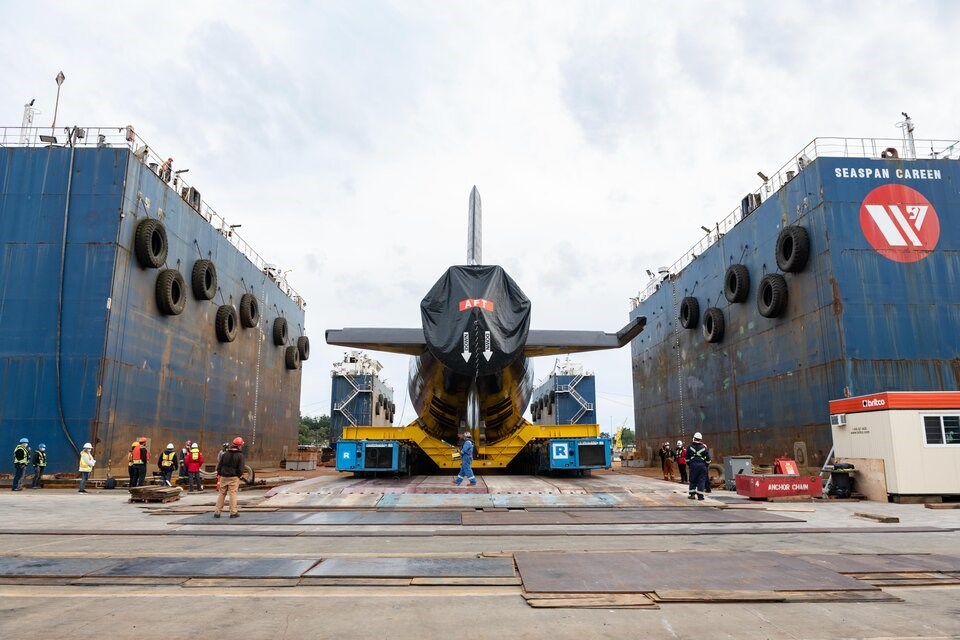An accident at a dry dock on Vancouver Island that caused significant damage to Canada’s most-advanced military submarine five years ago was caused by a series of avoidable failures, newly uncovered records show.
The full details of those failures, which have previously gone unreported, include a lack of key equipment, a breakdown in communication and pressure to complete a critical test more quickly because of a local noise bylaw that may not have even applied.
The federal government has now spent at least $715 million to repair the 34-year-old HMCS Corner Brook that it purchased in 1998.
Work that was supposed to conclude in 2016 has taken more than a decade, delayed by a fire in 2019, and an incident in 2020, when the vessel struck the seafloor during a test gone wrong at Victoria Shipyards.
In late 2020, the Department of National Defence found a thumb-sized hole connected to a leak in a main ballast tank — the part of the submarine that controls buoyancy — caused when workers inadvertently overpressurized the tank, according to a report obtained and covered by the Canadian Press.
Documents reviewed by BIV show the incident led to significant “damage, deformation and separation” of several of the submarine’s bulkheads.
The records were filed in federal court earlier this year after the lead contractor Babcock Canada challenged one of its insurers, Lloyd’s Underwriters, for refusing to cover the “significant” costs of the damage.
The case was settled in April 2025 ahead of a trial scheduled for the fall. The full cost of the damage has not been disclosed, but documents submitted to the court before the settlement paint a vivid picture of events that ultimately kept Canada’s most sophisticated piece of coastal defence equipment out of commission for years.
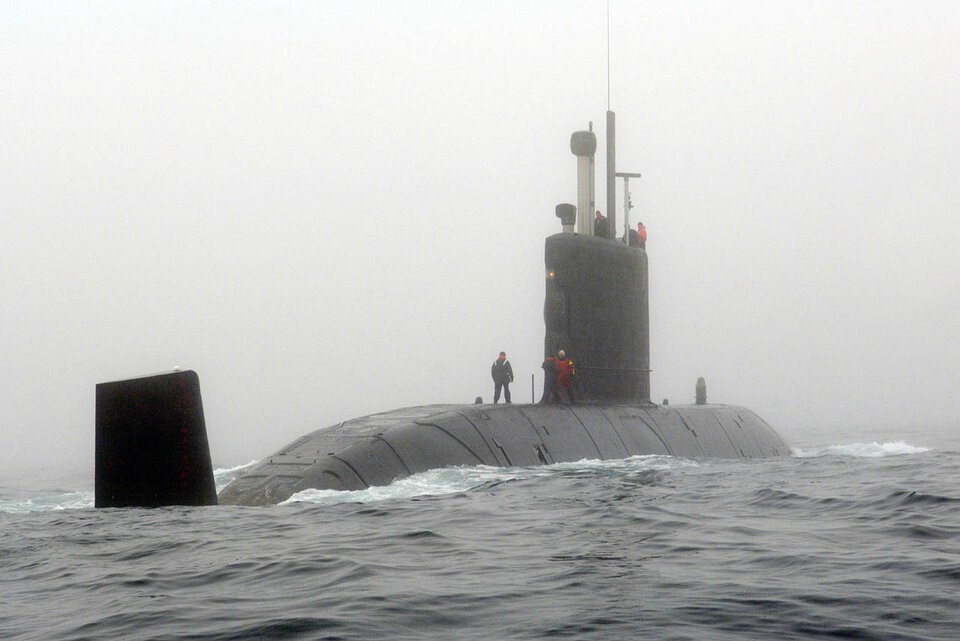
A history of damage
The HMCS Corner Brook is one of four U.K-built, diesel-electric, hunter-killer submarines purchased by Canada in 1998.
Since then, the renamed Victoria-class submarines have been plagued by multiple mechanical and electrical problems. To date, the fleet has spent more time undergoing repairs than in active service.
In 2008, U.K.-based aerospace and defence firm Babcock International plc formed the Canadian Submarine Management Group (CSMG). That same year, the subsidiary — later renamed Babcock Canada — signed a $1.5 billion, 15-year in-service support contract to provide maintenance, repair and overhaul work on the four submarines.
The company, which has offices in Ottawa, Vancouver, Victoria, Winnipeg and Halifax, has since been awarded several multimillion-dollar contracts to fix and modernize the submarines, refit Coast Guard vessels and upgrade communications systems for the Department of National Defence.
Babcock Canada’s largest contracts by far have been associated with Canada’s submarine fleet. In submissions to federal court, a lawyer for the company described Babcock Canada’s role as providing the “white-collar” labour, like engineering roles and work supervision. Victoria Shipyards Ltd., a Seaspan subsidiary, was to provide “blue-collar” labourers, including pipefitters and welders.
As far back as 2015, senior staff at Babcock raised concerns that hydrostatic testing of the tanks had never been conducted in Canada.
Just months before the accident, Babcock Canada’s project manager of submarines James Charsley sent an email to colleagues warning that upcoming tests were high risk and needed “a higher level of oversight [than] we currently have.”
“Nobody in the meeting really had a handle on what is going on and there doesn’t appear to be overall ownership of understanding of what we are about to embark on,” wrote Charsley in the Jan. 15, 2020 email.
“I still don’t have a warm fuzzy we have this task appropriately in hand.”
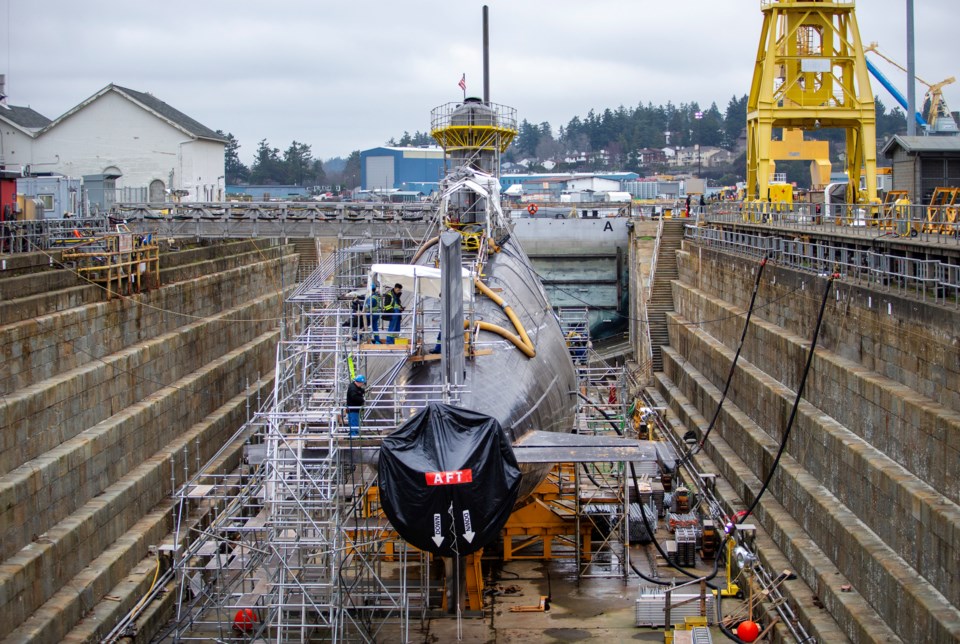
A third-party investigation report commissioned by Babcock later found that a chain of failures preceded the accident, starting at 6:30 a.m. on March 7, 2020.
Hydrostatic tests that were to start first thing that morning were delayed two hours when someone overseeing the shipyard found the area around the submarine was “not up to cleanliness test standards,” the report said.
When workers went to fill the tanks with an estimated 30,000 litres of water, they realized the relief valves they needed to do the job according to plan were not in the warehouse. They added more people to oversee the work and went ahead with the test anyway.
By 4 p.m., the ballast tanks had achieved the planned test pressure. That’s when a senior test specialist left the site for a personal appointment. Investigators later determined it was not clearly communicated or formally understood who replaced him as test director.
At 6 p.m., workers hooked up an air compressor to the ballast tank to help force the water out faster in what was later discovered to be an unsanctioned practice.
Within about five minutes, workers found structural damage and water leaking from a hole near the hydroplane.
It was later discovered that the uncontrolled pressurized air had caused “significant damage” to the longitudinal and transverse bulkheads. The details of some of the damage to the submarine was redacted in the version of the report submitted to court.
In one instance, investigators said they discovered a near miss. During testing, a high-pressure bottle had been left inside the ballast tank fully charged with nitrogen. The tank posed “serious hazards” to workers, the submarine and the facility, investigators found.
Multiple pressures at shipyard contributed to accident
Interviews carried out in the wake of the accident showed workers thought the team faced a high level of job stress at the time.
Data on overtime hours leading up to the incident was not available before the final report was drafted. But on the test day, investigators concluded it was clear pressure was building amid delays, and that had a negative impact on decisions made by workers and management.
Ballast tank testing was initially planned to last two days, but in the end, was compressed into a single 24-hour period.
One of the primary time pressures came from a city noise bylaw. The morning of the incident, workers were told the bylaw would prevent them from using an external air compressor after 11:30 p.m., according to the report.
It’s not clear which municipal bylaw the shipyard was working under. A spokesperson with the Township of Esquimalt said its noise bylaws do not apply to the shipyard or the navy base.
When asked about the noise bylaw, Department of National Defence spokesperson Cheryl Forrest said: “All applicable regulatory requirements are being followed.”
Following the incident, a comprehensive investigation led to improvements in “processes, procedures and equipment for pressure testing,” Forrest added.
According to Robert Huebert, executive director of the Centre for Military, Security and Strategic Studies at the University of Calgary, the idea that workers were rushing to finish work on a crucial piece of Canadian military hardware because of a municipal noise bylaw is “totally ridiculous.”
“It’s an omission of political ownership,” he said. “As soon as the minister of defence gets word that this is a problem of one of their most important strategic systems, you solve that, and instead, they don’t.”

Investigators concluded that the team overseeing the project was committed to success, and that they understood the potential impact the delivery of the submarine project would have “on the success or failure of Babcock’s future prospects.”
In a legal dispute later settled outside of court, Babcock claimed the mistakes made during the 2020 hydrostatic strength testing should be covered by a Lloyd Underwriters marine insurance package taken out by Seaspan and Victoria Shipyards.
Lawyers for Lloyd’s pushed back, saying Babcock had at least 13 people on site during the failed structural testing, and they were ultimately responsible for what happened that day.
Court documents show Babcock was ultimately paid out for the damage by another insurance policy it held with the underwriting firm CNA Canada. The amount of that claim has never been publicly disclosed.
In a statement, Babcock declined to provide details on the cost of the damage, saying the ensuing settlement with Lloyd’s Underwriting was “commercially confidential.”
The company said it accepted responsibility for the direct repair costs and fixed the submarine in line with customer requirements. Babcock deferred most of BIV’s questions to the Department of National Defence.
In an email, a department spokesperson said the damage sustained to the HMCS Corner Brook in 2020 led to a 44-day delay in repairs — all covered by Babcock Canada, its subcontractors and insurers.
“A full repair was deemed impractical, so some defects were brought into service after careful engineering assessments,” said Forrest.
The spokesperson added that the defects “do not impact the submarine’s strategic capabilities.”
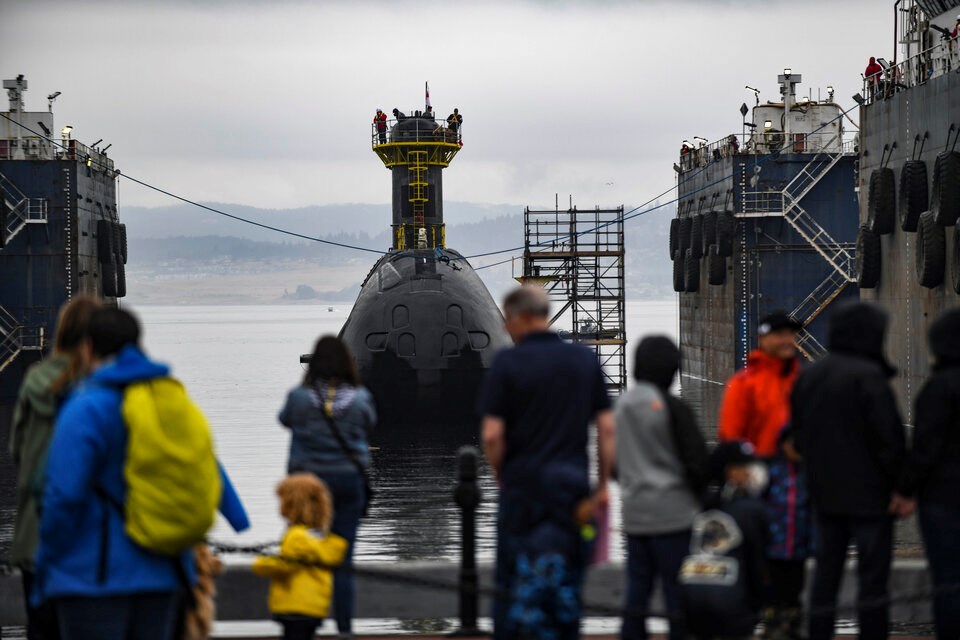
Canada promises big defence spending
Details of HMCS Corner Brook’s 2020 incident come as Canada has promised to ramp up its military spending.
On June 9, Prime Minster Mark Carney said his government would achieve a NATO military spending target of two per cent of GDP by March 2026.
The announcement included more than $9 billion in new spending to purchase and upgrade a variety of new military platforms, as well as long-range precision strike capabilities, increased ammunition manufacturing, and new Arctic radar and seafloor monitoring sensors.
In his comments, Carney emphasized building up industrial capacity and infrastructure so the Canadian Armed Forces can improve the “speed, predictability and scale” of spending over the long-term as it receives more money.
Mark Norman, a former vice-admiral and commander with the Royal Canadian Navy, said the announcement represents a “huge step in the right direction” but will not solve what he described as decades of “benign neglect.”
That, he said, will require an overhaul of the Canadian Armed Forces so the country’s manufacturing capacity is embedded in its physical supply chain. It will also demand transforming the military into an organization that attracts a range of people, from those interested in blue-collar trades to high-tech jobs, he said.
One of the biggest tests, he said, will be around the new fleet of up to 12 conventionally-powered submarines announced in 2024 and scheduled to be delivered by 2035. The short-list includes modern conventional submarines built by companies in Korea, Japan, Sweden and Germany.
Who ultimately provides the new fleet of submarines is less important than how they are integrated into Canada’s supply chains over the span of their lifetime, said Norman.
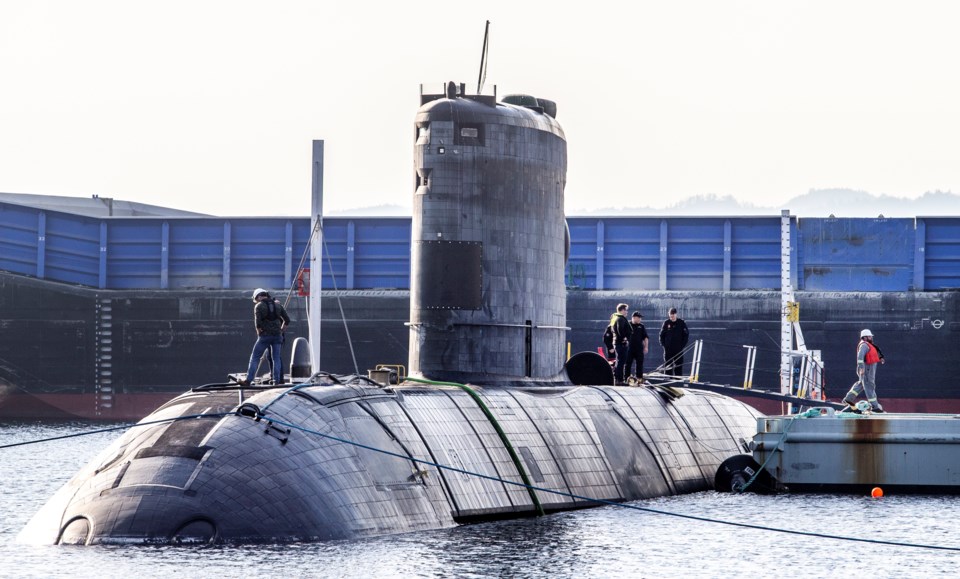
A pattern of industrial mishaps
The 2020 incident is symptomatic of a country that has become obsessed with “big shiny objects” in the military instead of building up a defence industrial base.
While it’s important to look at problems around dry docks — including tooling, machinery and the workforce — Norman said repeated systematic failures on the maintenance and overhaul side of big military assets speak to a deeper “national attitude” that has forced industry to work with lean budgets and insufficient manpower.
“It annoys the hell out of me that these types of things happen,” the former vice-admiral said. “There is a fine line between ‘shit happens’ and ‘here we go again.’ And sadly, there are too many examples of things falling on the ‘here we go again’ side.”
Huebert said a modern submarine fleet is the No. 1 critical capability Canada could contribute to a major conflict with China, something he sees as inevitable. When it comes to confronting threats from Russia, a robust Canadian submarine capacity could help NATO cut off Russian access to the gap of ocean spanning Greenland, Iceland and the United Kingdom, he said.
“If the Russians and the Chinese know that Australia, Japan, South Korea and Canada have a potent submarine force ready to be used against it, it acts as a form of deterrence,” said Huebert.
At home, Norman said submarines are the only weapon platform aside from mines that can deny access to Canada’s three sprawling coastlines.
“You want to control access into the Canadian North? Well, you can have a combination of sensors and submarines,” he said. “The submarine is the dominant weapon system at sea.”
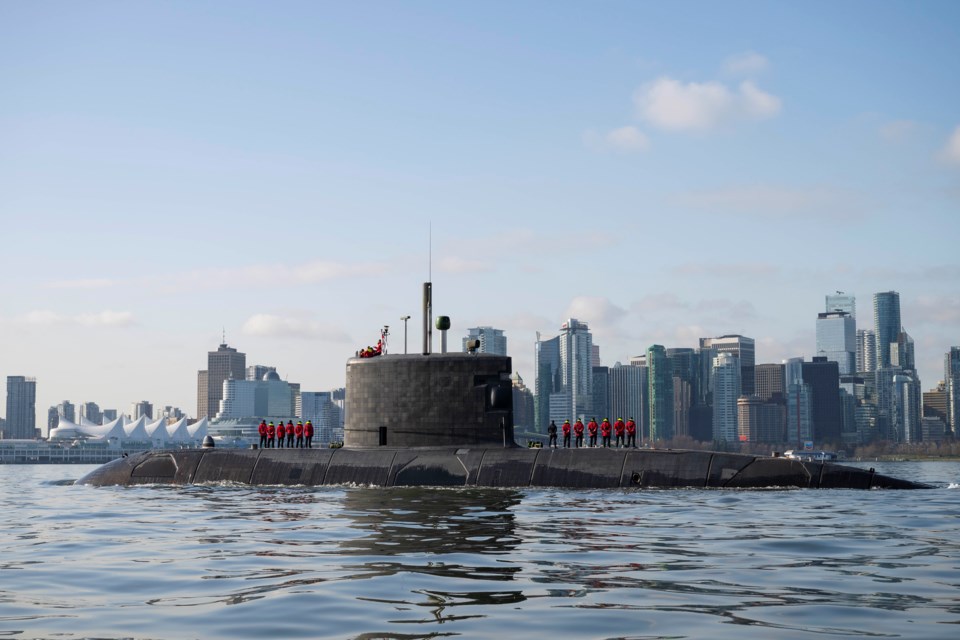
Those capabilities come with a price. In September 2024, the office of former defence minister Bill Blair said it was sending a request for information to naval firms seeking answers on their capabilities to build Canada’s new submarine fleet.
Formal naval officers who reportedly reviewed the request told the Ottawa Citizen the program would cost roughly $100 billion.
When asked how Canada would pay for the military spending hike, Carney suggested it would be partly covered by savings found through greater government efficiency. He didn’t say how it might increase Canada’s current $62 billion debt.
“We just cut taxes. We’re not raising taxes,” he added.
Huebert acknowledged submarine programs are some of the costliest military capabilities to maintain, partly because they require excess resources to run properly. But by refusing to properly fund such military logistics and infrastructure, he said successive federal governments have left Canada with a national security policy built on hope.
“We are hoping we can now get serious. We are hoping that no major war occurs before 2040,” Huebert said.
“We are hoping that the belligerent powers, as they develop these capabilities, won’t try to move at this point in time.”
Several years behind schedule, the HMCS Corner Brook returned to active service in April 2025.
Years of upgrades and repairs now make the vessel — which first launched in 1991 — Canada’s most advanced military submarine, according to the navy.

